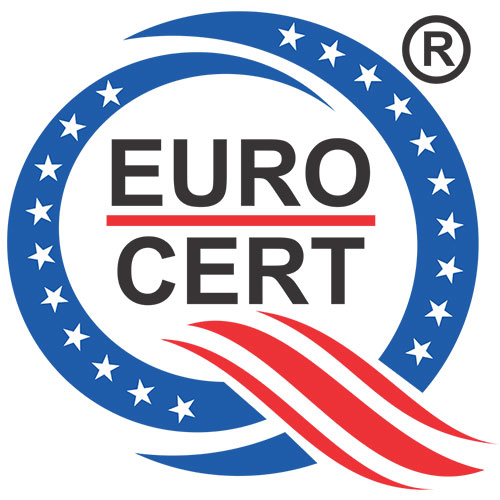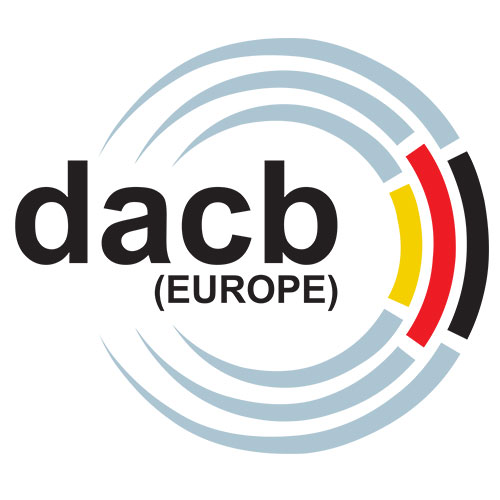ISO 27001:2013
BASIC INTRODUCTION OF ISO 27001
ISO/IEC 27001 2013 is an information security management standard. It defines a set of information security management requirements. The official complete name of this standard is ISO/IEC 27001:2013
Information technology - Security techniques - Information security management systems – Requirements The purpose of ISO IEC 27001 is to help organizations to establish and maintain an information security management system (ISMS). An ISMS is a set of interrelated elements that organizations use to manage and control information security risks and to protect and preserve the confidentiality, integrity, and availability of information. These elements include all of the policies, procedures, processes, plans, practices, roles, responsibilities, resources, and structures that are used to manage security risks and to protect information.
ISO/IEC 27001 is an information security standard, part of the ISO/IEC 27000 family of standards, of which the last version was published in 2013.
HOW TO USE ISO IEC 27001
If you don’t already have an information security management system (ISMS), you can use the ISO IEC 27001 2013 standard to establish one. And once you’ve established your organization’s ISMS, you can use it to protect and preserve the confidentiality, integrity, and availability of information and to manage and control your information security risks.
HISTORY OF ISO 27001:2013
BS 7799 was a standard originally published by BSI Group in 1995. It was written by the United Kingdom Government Department of Trade and Industry (DTI), and consisted of several parts.
The first part,containing the best practices for information security management, was revised in 1998; after a lengthy discussion in the worldwide standards bodies, it was eventually adopted by ISO as ISO/IEC 17799, Information Technology - Code of practice for information security management. in 2000. ISO/IEC 17799 was then revised in June 2005 and finally incorporated in the ISO 27000 series of standards as ISO/IEC 27002 in July 2007.
The second part of BS7799 was first published by BSI in 1999, known as BS 7799 Part 2, titled Information Security Management Systems - Specification with guidance for use. BS 7799-2 focused on how to implement an Information security management system (ISMS), referring to the information security management structure and controls identified in BS 7799-2. This later became ISO/IEC 27001:2005. BS 7799 Part 2 was adopted by ISO as ISO/IEC 27001 in November 2005.
BS 7799 Part 3 was published in 2005, covering risk analysis and management. It aligns with ISO/IEC 27001:2005.
ISO/IEC 27001 is an information security standard, part of the ISO/IEC 27000 family of standards, of which the last version was published in 2013.
ELEMENTS OF ISO 27001:2013
The key elements can be described as follows:
Information security risk assessment
Define and apply an information security risk assessment process that: establishes and maintains information security risk criteria that include:
- the risk acceptance criteria; and
- criteria for performing information security risk assessments;
Information security risk treatment
Define and Apply an information security risk treatment process to:
- Select appropriate information security risk treatment options, taking account of the risk assessment result.
- determine all controls that are necessary to implement the information security risk treatment.
Information security objectives and planning to achieve them
Group of medical devices manufactured by or for the same organization and having the same basic design and performance characteristics related to safety, intended use and function.
Information security risk assessment
Minimum package that prevents ingress of microorganisms and allows aseptic presentation of the product at the point of use.
Information security risk treatment
Information of the results of information security risk treatment.
Internal audit
Internal audits at planned intervals to provide information on whether the information security management system.
Management review
Information security management system at planned intervals to ensure its continuing suitability, adequacy and effectiveness.
Statement of Applicability (SoA)
Link between the risk assessment & treatment and the implementation of your information security
OBJECTIVE SAMPLE OF ISO
The objectives should be designed to be S.M.A.R.T (specific, measurable, achievable, realistic and time-based) :
Examples of ISMS Objectives:
- To provide management direction and support for information security in accordance with business requirements and relevant laws and regulations.
- To achieve and maintain appropriate protection of organizational assets.
- To ensure that information receives an appropriate level of protection.
- To ensure that employees, contractors and third party users exit an organization or change employment in an orderly manner.
- To prevent unauthorized physical access, damage and interference to the organization’s premises and information.
- To prevent loss, damage, theft or compromise of assets and interruption to the organization’s activities
- To ensure the correct and secure operation of information processing facilities.
- To implement and maintain the appropriate level of information security and service delivery in line with third party service delivery agreements.
- To maintain the integrity and availability of information and information processing facilities.
- To ensure the protection of information in networks and the protection of the supporting infrastructure.
PROCEDURE OF ISO 27001:2013 CERTIFICATION
Process for ISO Certification The Certification process shall consist of the following key stages :-
- Application Review & Contract Review
- Initial Certification Audit: Stage-1 & Stage 2 Audit
- Certification Decision
- Continual Assessment (Surveillance Audit)
- Renewal Audit
- Suspending, Withdrawing, Extending or Reducing Scope of Certification
Client Side Documents Requirement
With the right preparation and a good understanding of what is required for ISO 27001 Certification, Some documentation needed ready for Certification Process. The documentation will define:
- ISMS Manual
- Organisation structure
- Who should record information and what information is recorded
- Responsibilities of employees
- Internal Audit & Management Review Meeting
- IS-Policy & Objective
- SoA control
- Risk Treatment Plan
- Documented Procedures
BENEFITS OF ISO 27001:2013
- Increased security awareness among employees and interested party
- Safeguarding of the security objectives confidentiality, availability, integrity, authenticity, and reliability of information
- Contribution to safe guarding business continuity
- Legal certainty through systematic adherence to relevant laws on information security and data protection
- Reduced risk of management liability
- Cost savings through avoid incidents in information security management
- Internationally recognized & applicable to all sectors, giving you access to new markets across the world
- Give proof to your customers and purchasers of the high level of security management.
- Identify risks and put controls in place to manage or eliminate them
- Gain stakeholder and customer trust that their data is protected as Keeps confidential information secure
- Provides customers and stakeholders with confidence in how you manage risk
- Enhanced customer satisfaction that improves client retention
- Consistency in the delivery of your service or product
- Manages and minimizes risk exposure
- Builds a culture of security
ROAD MAP FOR ISO 27001:2013
Roadmap and plan for ISO 27001 Covering key Points:
UNDERSTANDING
Training on Standard Requirement Organizations needs to have the knowledge, skills and capability to support a standard beyond the certification audit.
PREPARE
GAP analysis: We do gap analysis & IT Risk analysis to identify what you do and what ISO 27001 recommends to do, it may be process addition or modification to adopt International Best Practices
IMPLEMENT
System Document Development: based on the training the client reviews their own management system and evaluates their existing Security policies and procedures and modifies them to comply with the best practice.
Internal Auditor: Training Regular internal audits against the system are the requirements of the standard.
REVIEW
Standard Implementation: Client must ensure that their employees are adopting the new protocols and procedures inline of the standards.
Internal Audit: Client conducts an internal audit of their management system implementation. They must examine their own processes and procedures in terms of effectiveness.
Management Review: Client to discuss the future of their management system with their senior management about the strengths and weakness of the system to identify areas for continual improvement
ASSESS
Pre-assessment: A pre-assessment audit done prior to and outside the formal scope of certification to identify area that need more work whilst also preparing key employees for the eventual audits. A useful audit to rehearse ,align and de-bug your system:
Stage1- Assessment: Document Review
Stage 2- Assessment: Run through of the implemented systems.
PROMOTE
Certification Issue A certificate is provided to your organization.
CONTINUING ASSESSMENT
Continuing assessment Visit
A routine surveillance visit which every year or 12 months cycle over a three year period to monitor and evaluate continuing systems performance.
Re-assessment
Re certification of your management system is required every three years after the initial certification and covers a comprehensive review of the whole system. It may include an additional stage 1 review where significant problems have been encountered during the course of the certification cycle.
APPLY FOR ISO 27001:2013 CERTIFICATION
Contact Us:If you plan to go for ISO Certification, you may ask for Quotation by providing your organization’s information in application form, you can download the inquiry form available at the website or submit your inquiry through feedback. Alternatively you may send your inquiry through mail to info@eurocertindia.com or call us at Mob: +91-9769903178
WHAT IS THE COST OF THE ISO 27001:2013
Charges for ISO 27001:2013 Certification may depend on the size, location, Complexity of operation, Processes and it’s inter relevance. Eurocert produces a guidance price list based on company nature & size. For a Quotation please get in touch with us either by sending your inquiry through mail to info@eurocertindia.com or call us at Mob: +91-9769903178
INTEGRATION OF ISO 27001:2013 WITH OTHER STANDARD
An integrated management system (IMS) combines all related components of a business into one system for easier management and operations. Quality, Environmental, and Safety management systems are often combined and managed as an IMS.
Integrated Management System (IMS) integrates all of an organization’s systems and processes in to one complete framework, enabling an organization to work as a single unit with unified objectives.
- INTEGRATED MANAGEMENT SYSTEM (IMS) with ISO 27001:2013 + ISO 9001 :2015
- INTEGRATED MANAGEMENT SYSTEM (IMS) with ISO 27001:2013 + ISO 14001 :2015
- INTEGRATED MANAGEMENT SYSTEM (IMS) with ISO 27001:2013 + ISO 45001 :2018
- INTEGRATED MANAGEMENT SYSTEM (IMS) with ISO 27001:2013 + ISO 22000:2018
- INTEGRATED MANAGEMENT SYSTEM (IMS) with ISO 27001:2013 + ISO 13485:2016
- INTEGRATED MANAGEMENT SYSTEM (IMS) with ISO 27001:2013 + ISO 50001:2018
LIST OF ISO 27001 SERIES STANDARD
ISO/IEC 27000 — Information security management systems
Overview and vocabulary
ISO/IEC 27001 — Information technology - Security Techniques - Information security management systems
Requirements: The 2013 release of the standard specifies an information security management system in the same formalized, structured and succinct manner as other ISO standards specify other kinds of management systems.
ISO/IEC 27002 — Code of practice for information security controls
Essentially a detailed catalog of information security controls that might be managed through the ISMS
ISO/IEC 27003 — Information security management system
Implementation guidance
ISO/IEC 27004 — Information security management
Monitoring, measurement, analysis and evaluation
ISO/IEC 27005
Information security risk management
ISO/IEC 27006
Requirements for bodies providing audit and certification of information security management systems
ISO/IEC 27007
Guidelines for information security management systems auditing (focused on auditing the management system)
ISO/IEC TR 27008
Guidance for auditors on ISMS controls (focused on auditing the information security controls)
ISO/IEC 27009
Essentially an internal document for the committee developing sector/industry-specific variants or implementation guidelines for the ISO27K standards
ISO/IEC 27010 — Information security management for inter
Sector and inter-organizational communications
ISO/IEC 27011 — Information security management
Guidelines for telecommunications organizations based on ISO/IEC 27002
ISO/IEC 27013
Guideline on the integrated implementation of ISO/IEC 27001 and ISO/IEC 20000-1 (derived from ITIL)
Accreditation


